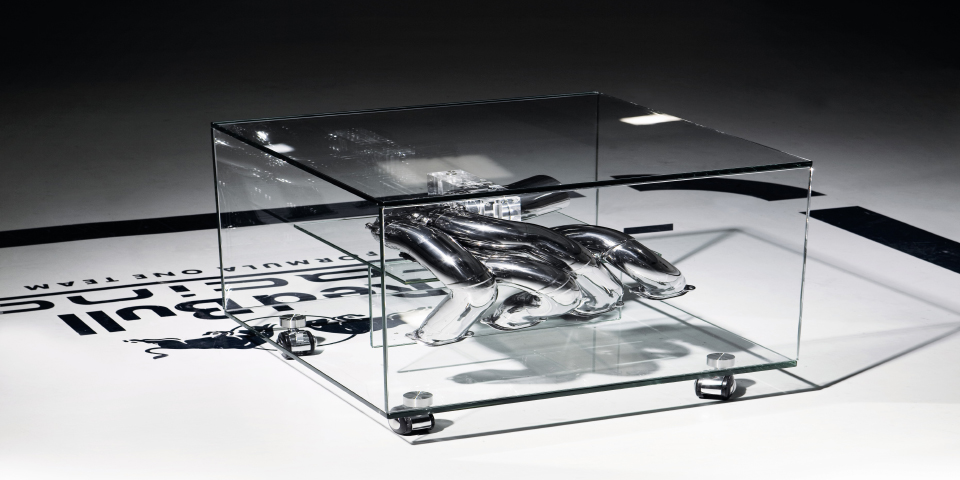Gold's "Upside Breach" Stalls
Adrian Ash
But Low Rates & Liquidity “Support Investment”
THE PRICE OF GOLD held in a tight range around $1225 an ounce early in London on Wednesday, little changed by a drop in commodity prices and the first fall for a week in European equities.
Government bond prices rose, pushing 30-year German Bund yields down to a record low of 2.97%.
The Japanese Yen rose back towards ¥85 per Dollar – nearing a 15-year high – as Tokyo policy-makers prepared to discuss intervening in a meeting on Friday.
“We view liquidity and low real interest rates as the fundamental drivers of gold investment demand,” says today’s report from Walter de Wet and his team at Standard Bank.
“Even if risk appetite improves, gold should rise.”
Over in the currency markets today, the British Pound jumped 1.5¢ – recovering all of Tuesday’s loss – after minutes from the Bank of England’s latest interest-rate meeting showed policy-makers noting that “UK inflation has been above target in all bar nine of the past 50 months.”
The gold price in Sterling fell back to last week’s finish at £780 an ounce, more than 5% above late-July’s four-month low, but 10% below June’s record peak.
Today’s minutes showed that the committee still voted 8-to-1, however, to keep base rate at its historic low of 0.5% – some 2.6% below Tuesday’s official reading of UK inflation – and maintain the Bank of England’s current £200 billion of quantitative easing.
“The European Central Bank must make its actions [similarly] transparent, at least retroactively,” said German coalition partner Frank Schaeffler, head of the Free Democratic Party, in a newspaper interview yesterday.
The ECB has “crossed the Rubicon” by buying government debt from the ailing “olive states”, Schaeffler believes.
“The ECB’s [political] independence is not carte blanche for breaking the law.”
Meantime in the United States, “Why isn’t the Fed acting more aggressively?” asks a blog at The Economist today, dismissing the answer given in a speech yesterday by Minneapolis Fed president Narayana Kocherlakota, that “Most of the existing unemployment represents a [structural] mismatch that is not readily amenable to monetary policy.
“Firms have jobs, but can’t find appropriate workers,” claimed Kocherlakota, who becomes a voting Fed policymaker next year. “The workers want to work, but can’t find appropriate jobs.”
The Euro meantime failed for the sixth session running on Wednesday to break above $1.29 to the Dollar, a level first reached in late 2004.
Formerly showing a strong connection with the gold price in Dollars, the Euro/Dollar exchange rate ended Tuesday with a correlation to gold of minus 0.23.
That figure would read +1.0 if gold and the Euro moved in lockstep together against the US currency, or minus 1.0 if they moved in absolute opposition – a perfectly negative correlation very nearly achieved for the first time ever at the height of the Greek debt crisis in mid-May.
From the Euro’s launch a decade ago to end-2009, the single currency averaged a strongly positive correlation with the gold price of +0.52 (rolling one-month correlation, daily changes.
So far in 2010, that average has sunk to a statistically insignificant minus 0.02.
“Gold’s upside breach [this week] has re-established some upside momentum,” says the latest technical analysis from Scotia Mocatta.
“$1250 remains a logical short-term target.”
But “Gold it finding some resistance at the old December 2009 high,” counters Phil Smith at Reuters Technical in Beijing, “[where] we could still be forming another top.
“Volume has been tailing off,” Smith repeats, “which is consistent with such a pattern.”
“Volumes seen this week have been increasingly thin,” agrees a London dealer, “and are making it more difficult to believe that gold’s run from $1157 to $1229 can be sustained.”
“I would say there’s still light buying from India” after last month’s bargain-hunting below $1200, says a Hong Kong dealer quoted by Reuters. “There’s a bit of selling of scrap after the price hits a new high.”
Typically quiet during the summer and harvesting months, gold demand from Indian consumers – the world’s No.1 buyers – is due to return with the autumn festival and wedding seasons, culminating in early November.
Adrian Ash
Gold price chart, no delay | Buy gold online at live prices
Formerly City correspondent for The Daily Reckoning in London and head of editorial at the UK’s leading financial advisory for private investors, Adrian Ash is the editor of Gold News and head of research at BullionVault – winner of the Queen’s Award for Enterprise Innovation, 2009 – where you can buy gold today vaulted in Zurich on $3 spreads and 0.8% dealing fees.
(c) BullionVault 2010
Please Note: This article is to inform your thinking, not lead it. Only you can decide the best place for your money, and any decision you make will put your money at risk. Information or data included here may have already been overtaken by events – and must be verified elsewhere – should you choose to act on it.













